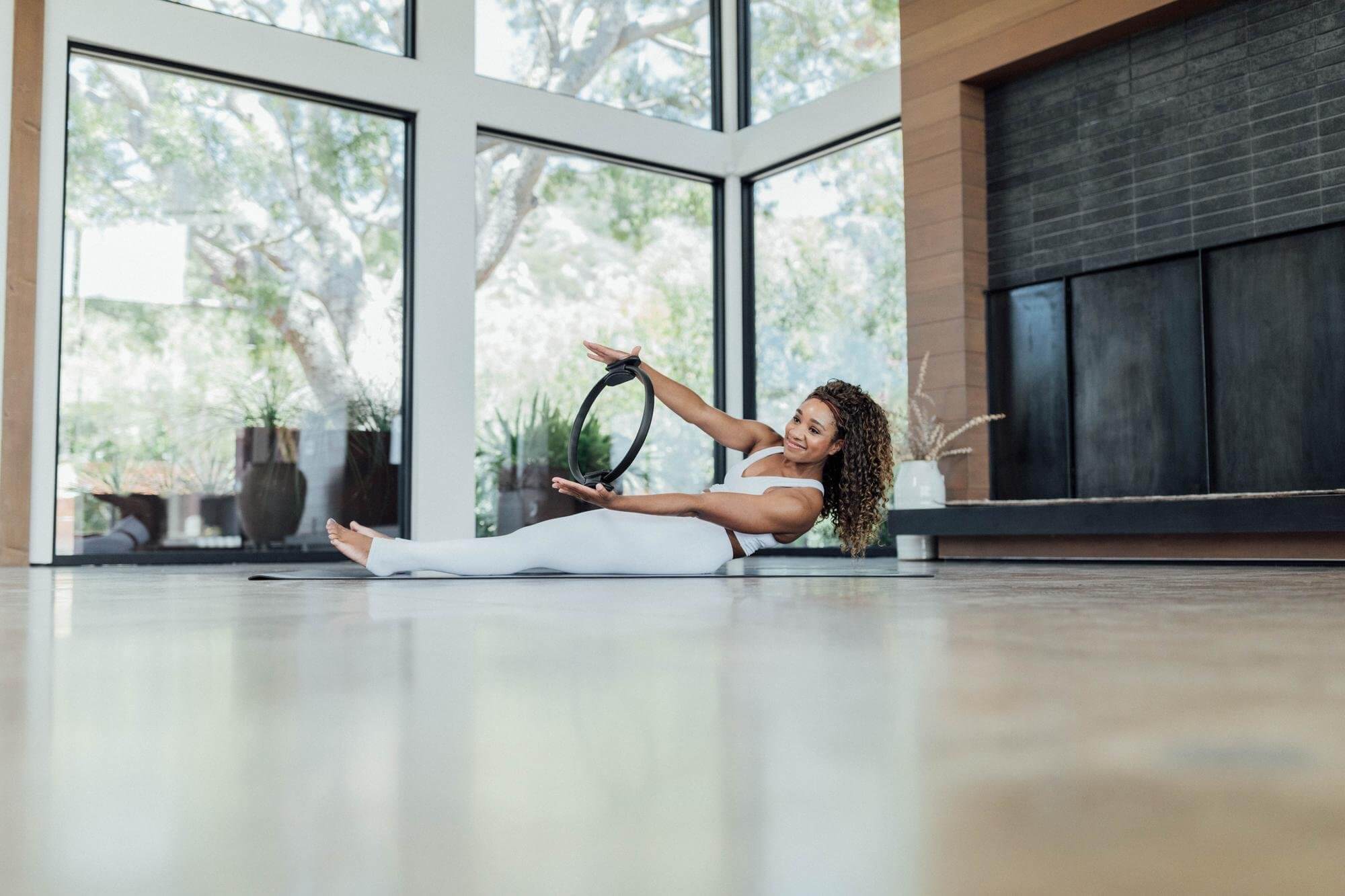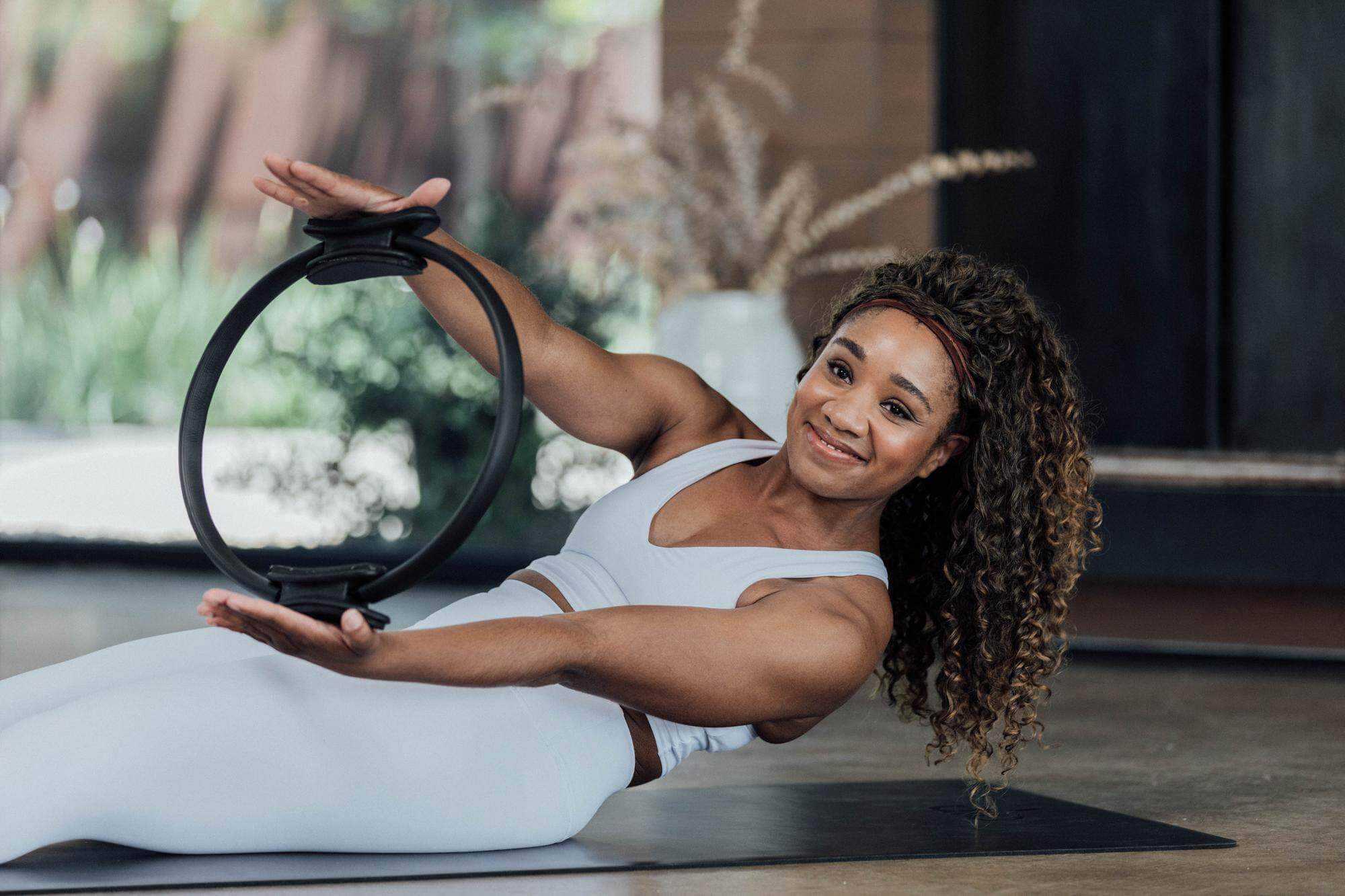Pilates ring workouts offer a unique approach to enhancing both strength and flexibility. This versatile piece of equipment, also known as a magic circle, allows practitioners to engage multiple muscle groups, improve their posture, and increase overall body awareness. Throughout this article, we will explore the various benefits of Pilates ring workouts, how to get started, advanced exercises, integration into your routine, and how to overcome common challenges.
Understanding the benefits of Pilates ring workouts
The use of a Pilates ring introduces a new dimension to traditional Pilates exercises. Utilising this tool can yield numerous benefits, making it an excellent addition to your fitness regimen.
Boosting strength with Pilates ring exercises
One of the primary advantages of incorporating a Pilates ring into your workouts is the boost in strength it provides. The ring creates resistance, allowing you to engage your muscles more effectively during exercises. By squeezing the ring between your legs or arms, you can activate your core, glutes, and upper body, promoting muscle toning and definition.
Moreover, the controlled movements required when using a Pilates ring enhance the strength of stabilising muscles, which are often overlooked in traditional weight training. As these stabiliser muscles become stronger, your overall performance in various activities, from sports to daily tasks, will improve significantly. This improvement is particularly beneficial for athletes, as enhanced muscle coordination and stability can lead to better performance and reduced risk of injury during competitive events.
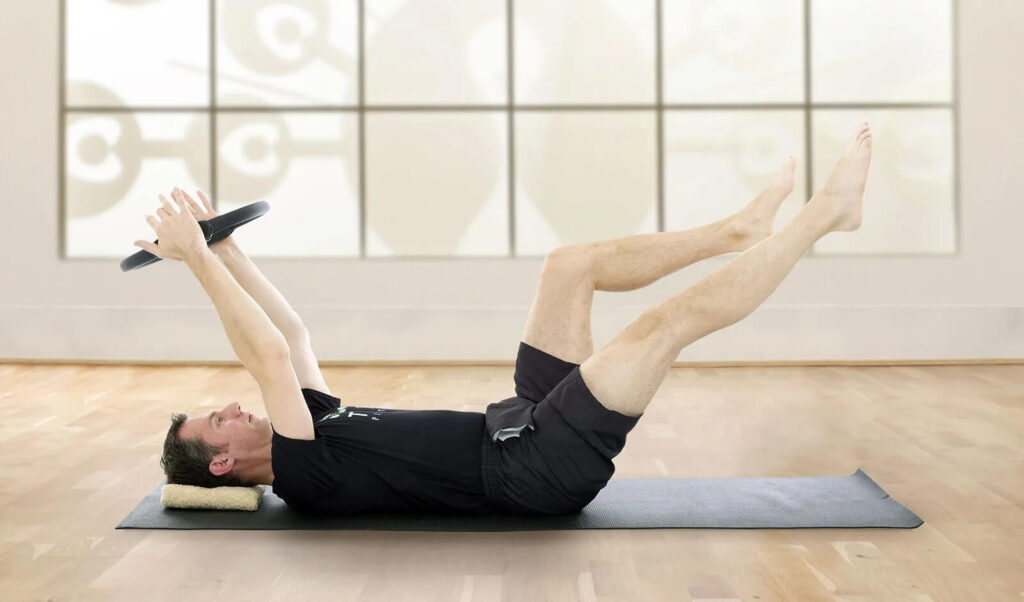
Increasing flexibility through Pilates ring workouts
In addition to strength training, Pilates ring exercises can greatly improve flexibility. By incorporating dynamic stretches and controlled movements, the ring helps elongate your muscles and increase your range of motion. This is especially beneficial for individuals who may have tight muscles from inactivity or repetitive movements.
Furthermore, the use of a Pilates ring encourages proper alignment, which aids in reducing the risk of injury. As flexibility improves, individuals may also notice an enhanced ability to perform daily activities with ease, contributing to an overall sense of well-being. This newfound flexibility can also enhance your performance in other physical activities, such as running or dancing, where a greater range of motion is often required. Additionally, the focus on breath control during Pilates ring workouts can promote relaxation and mindfulness, further enriching your overall fitness experience.
Getting started with Pilates ring workouts
To fully benefit from Pilates ring workouts, it’s important to know how to get started appropriately. This involves selecting the right Pilates ring and familiarising yourself with basic exercises suitable for beginners.
Choosing the right Pilates ring for you
When selecting a Pilates ring, consider factors such as diameter, material, and resistance level. Typically, a standard Pilates ring has a diameter ranging from 13 to 15 inches, which should comfortably fit between your thighs or arms during workouts.
Additionally, rings are often made from varying materials, including durable plastic or rubber. Make sure to choose a ring that feels comfortable to grip while providing enough resistance for your fitness level. Beginner-friendly rings usually have softer resistance, allowing you to gradually progress as you build strength.
It is also worth noting that some Pilates rings come with padded grips, which can enhance comfort during your workouts, especially if you are performing exercises that require prolonged pressure on your hands or legs. This added cushioning can help prevent discomfort and allow you to focus on your form and breathing, which are crucial elements in Pilates practice. Furthermore, if you plan to use the ring in a group setting or class, consider a ring that is lightweight and easy to transport, ensuring that you can easily incorporate it into various workout environments.
Basic Pilates ring exercises for beginners
Once you have selected a ring, it’s time to start with some basic exercises. Here are a few exercises to consider:
- Chest Press: Hold the ring in front of your chest, engage your core, and press the ring outward as you exhale. Return to the starting position and repeat.
- Inner Thigh Squeeze: Place the ring between your thighs while lying on your back. Squeeze the ring tightly while engaging your pelvic floor muscles, hold for a few seconds, and release.
- Overhead Press: Sitting tall, hold the ring overhead with both hands. Slowly lower the ring behind your head, ensuring that your back remains straight, then lift it back to the starting position.
These introductory exercises can help you develop a solid foundation before progressing to more advanced movements. As you become more comfortable with these basic exercises, you might also explore variations that target different muscle groups or incorporate dynamic movements, such as leg lifts or seated rotations. These variations not only enhance your strength and flexibility but also keep your workouts engaging and enjoyable. Remember to listen to your body and adjust the resistance or intensity of the exercises as needed, ensuring that you maintain proper form throughout your practice.
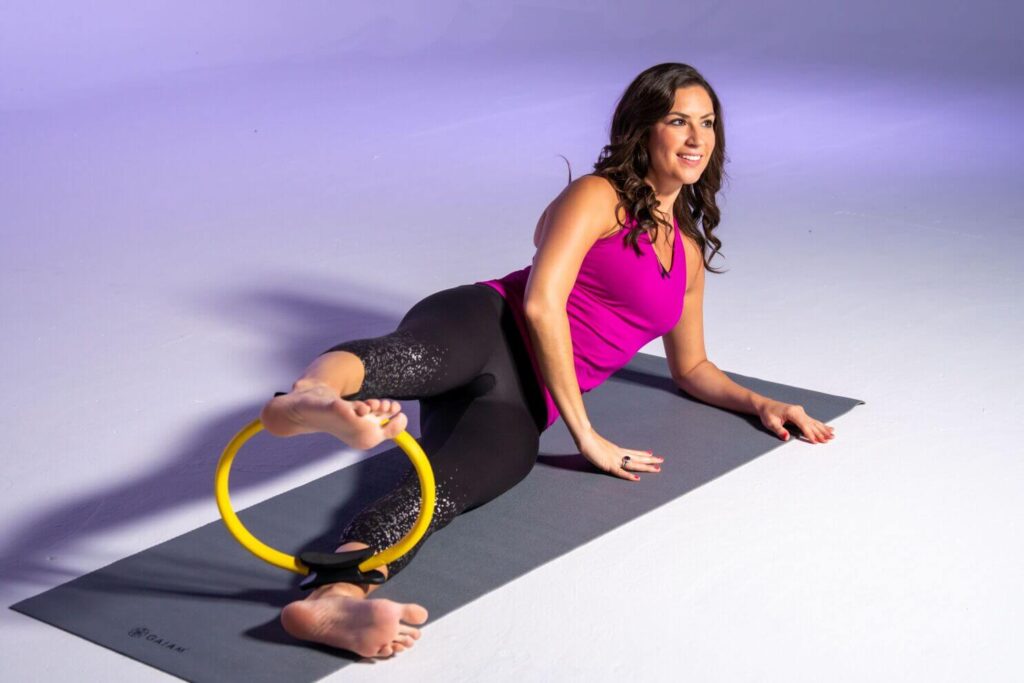
Advanced Pilates ring exercises for strength and flexibility
As you gain confidence and strength, you may wish to incorporate more challenging exercises into your routine. Advanced Pilates ring workouts can significantly boost your overall fitness, allowing you to explore the limits of your body while enhancing your physical capabilities. The Pilates ring, or magic circle, is a versatile tool that can intensify your workouts, providing both resistance and support to help you achieve your fitness goals.
Challenging Pilates ring exercises for core strength
To elevate your core engagement, try these advanced exercises:
- Teaser with Ring: While lying on your back, hold the ring between your ankles. Engage your core as you lift your legs and torso to create a V-shape, maintaining the ring’s grip. This exercise not only targets the abdominal muscles but also challenges your balance and coordination, making it a comprehensive workout for your core.
- Plank with Ring: In a plank position with the ring positioned under one hand, engage your core and rotate your body, moving the ring across your body, then return. This dynamic movement requires a strong focus on stability, as it engages the obliques and shoulders, enhancing overall core strength.
These exercises require core stability and strength, pushing you to achieve greater results. As you progress, consider increasing the duration of each hold or the number of repetitions to further challenge yourself. The integration of the Pilates ring can also help you develop a deeper mind-body connection, allowing you to become more aware of your movements and how they affect your body.
Dynamic Pilates ring exercises for enhanced flexibility
To enhance flexibility, incorporate the following dynamic exercises into your routine:
- Side Leg Lifts: While lying on your side, place the ring around your top ankle. Lift your leg towards the ceiling while maintaining resistance in the ring. This exercise not only stretches the hip flexors but also strengthens the outer thigh, promoting a balanced lower body.
- Bridge with Ring: Place the ring between your knees while lying on your back with bent knees. Lift your hips into a bridge position while squeezing the ring, activating your glutes and thighs. This movement encourages proper alignment and engages the pelvic floor, providing a comprehensive workout for the lower body.
These dynamic movements will not only challenge your flexibility but will also engage various muscle groups simultaneously. As you incorporate these exercises into your routine, pay attention to your breathing and alignment, as both are crucial for maximising the benefits of each movement. Additionally, consider pairing these exercises with stretches that target the same muscle groups to further enhance your flexibility and overall mobility.
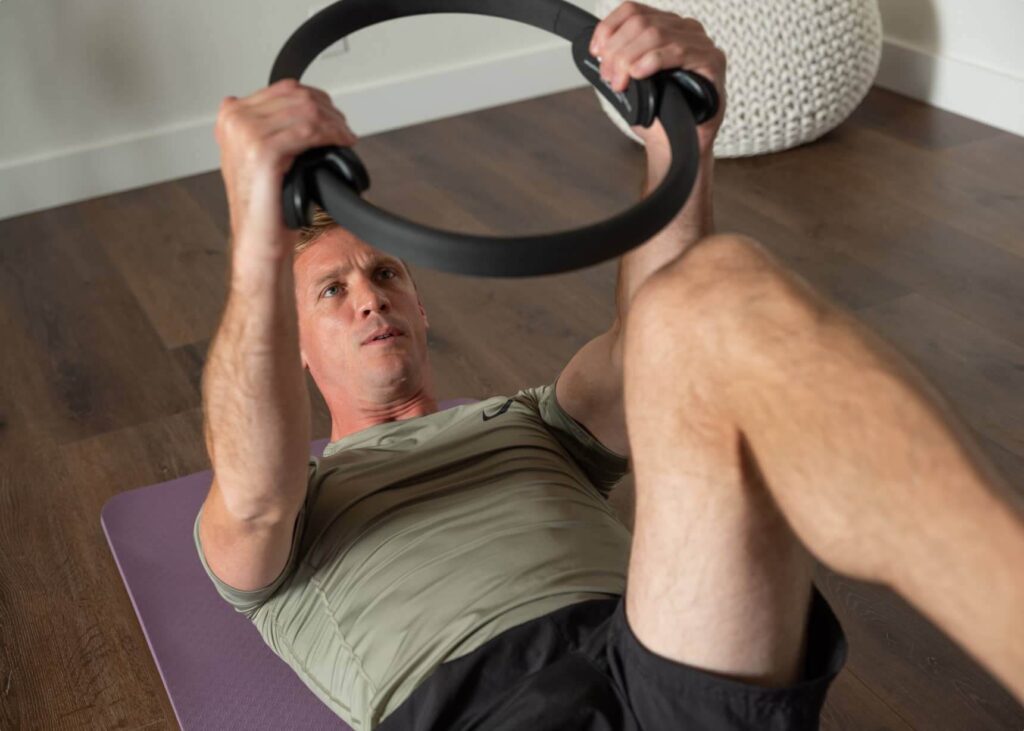
Incorporating Pilates ring workouts into your fitness routine
Now that you are familiar with Pilates ring exercises, you may wonder how to incorporate them into a balanced fitness routine. Consistency is key to seeing results.
Creating a balanced workout schedule
When integrating Pilates ring workouts into your regime, aim for a balanced schedule that includes strength, flexibility, and cardiovascular activities. A suggested weekly plan could include:
- 3 days of Pilates ring workouts
- 2 days of cardio exercises such as running or cycling
- 2 days of strength training without the ring to diversify muscle engagement
This way, you ensure a holistic approach to fitness that supports all aspects of health. Additionally, consider incorporating rest days into your schedule. These are vital for muscle recovery and can help prevent burnout, allowing your body to repair and strengthen. On rest days, gentle activities such as yoga or leisurely walking can keep you active without overexerting yourself, promoting a balanced and sustainable fitness journey.
Ensuring safety and effectiveness in your Pilates ring workouts
As with any workout, it’s essential to prioritise safety and effectiveness. Always listen to your body; if an exercise feels painful or uncomfortable, modify or skip it. Ensure that you maintain proper form throughout each movement to prevent injuries.
It’s advisable to start with a warm-up to prepare your muscles, followed by a cool-down period to aid recovery. Staying hydrated and nourished will also support your overall performance. Furthermore, consider tracking your progress by keeping a fitness journal. Documenting your workouts, including the exercises performed and how you felt, can provide valuable insights into your development and help you identify areas for improvement. This reflective practice not only enhances motivation but also allows you to celebrate your achievements, no matter how small, as you advance in your fitness journey.
Overcoming common challenges in Pilates ring workouts
As with any fitness journey, you may encounter challenges while performing Pilates ring workouts. Understanding these challenges and how to overcome them will help you stay motivated and progress effectively.
Dealing with common mistakes in Pilates ring exercises
Common mistakes include using improper form, which may lead to ineffective workouts and potential injury. Ensure that you are aware of your body alignment and that you are engaging the correct muscles during each exercise.
Another mistake is not breathing appropriately. Remember to breathe evenly throughout your exercises, exhaling during exertion and inhaling during recovery. This will enhance your performance and aid relaxation.
Tips for progressing in your Pilates ring workouts
To see continuous improvement, set realistic goals and track your progress. Incrementally increase the difficulty of your exercises, either by increasing the resistance of the ring or attempting more challenging movements.
Joining a class or training with a certified instructor can also provide additional support and motivation, helping you maintain engagement and accountability as you advance in your Pilates journey.
In conclusion, Pilates ring workouts are an excellent tool for enhancing strength and flexibility. By understanding the benefits, getting started with the right equipment, executing basic and advanced exercises, incorporating them into a balanced routine, and addressing challenges along the way, you can effectively improve.
Related: Pilates Rings vs. Magic Circle Which One Should You Choose?

